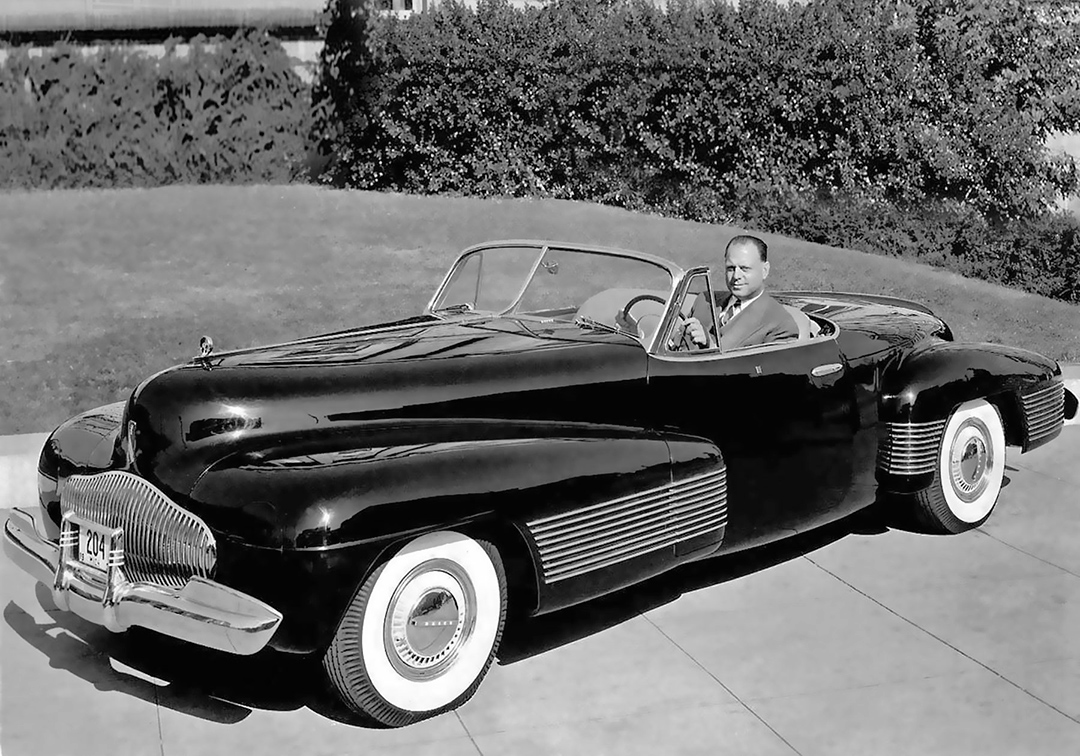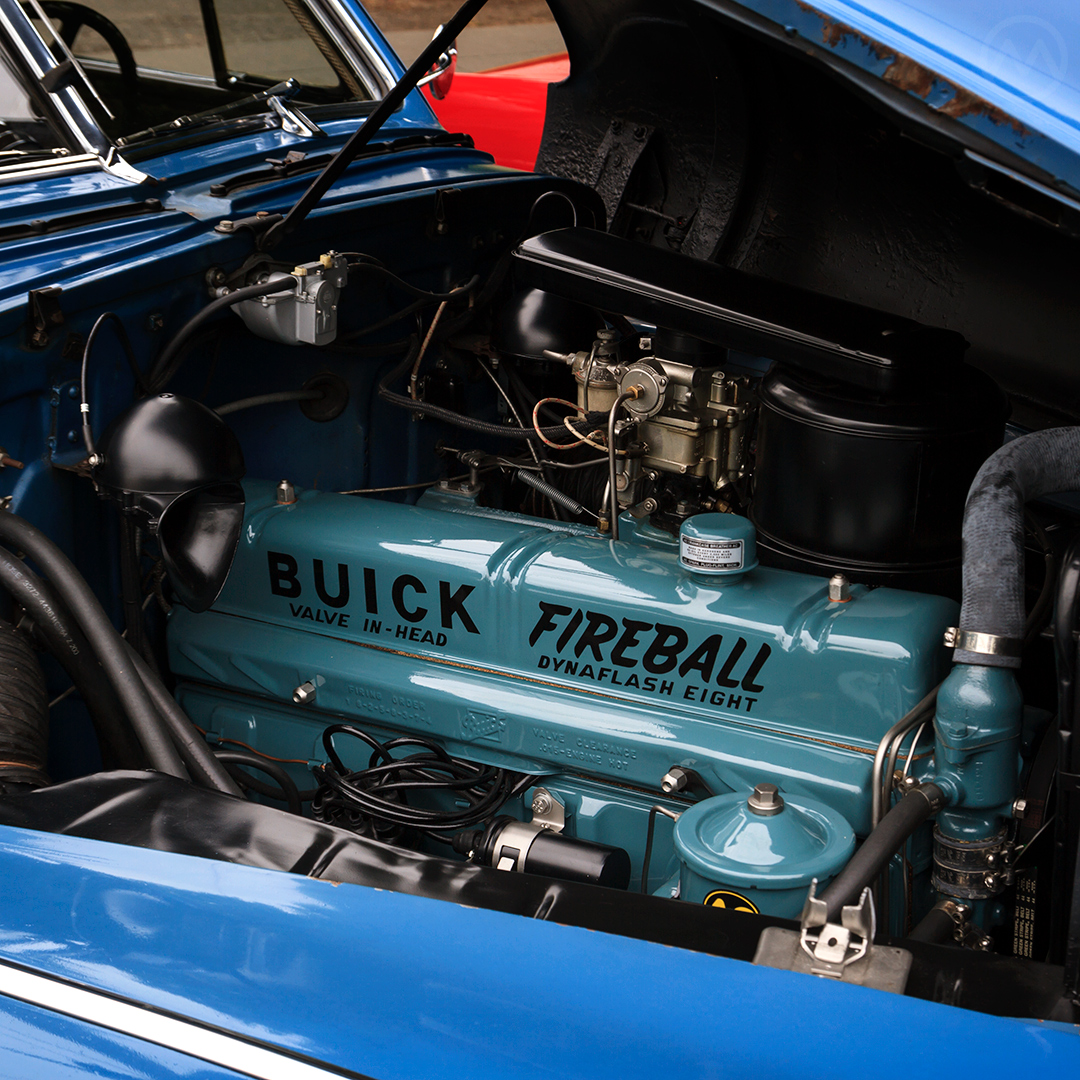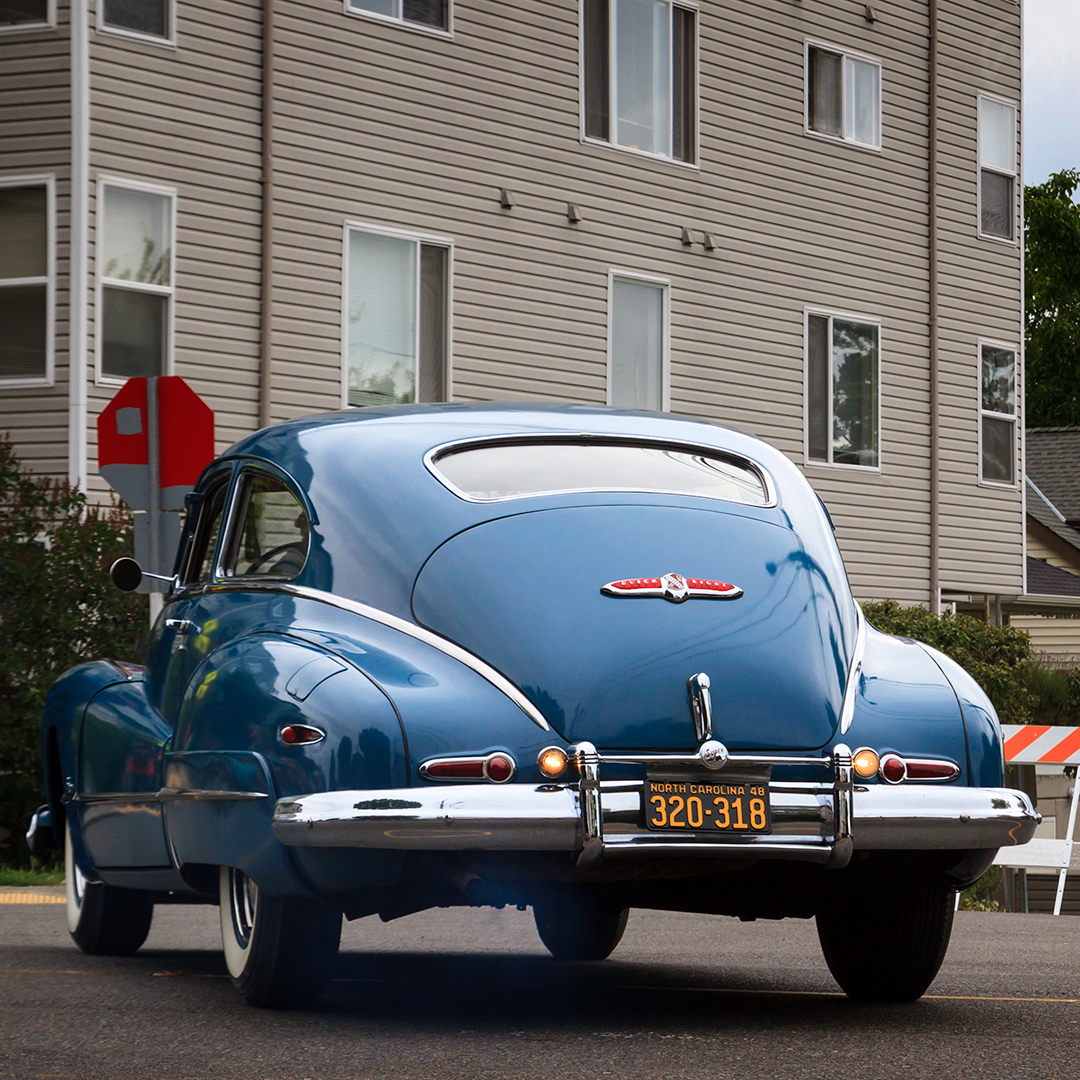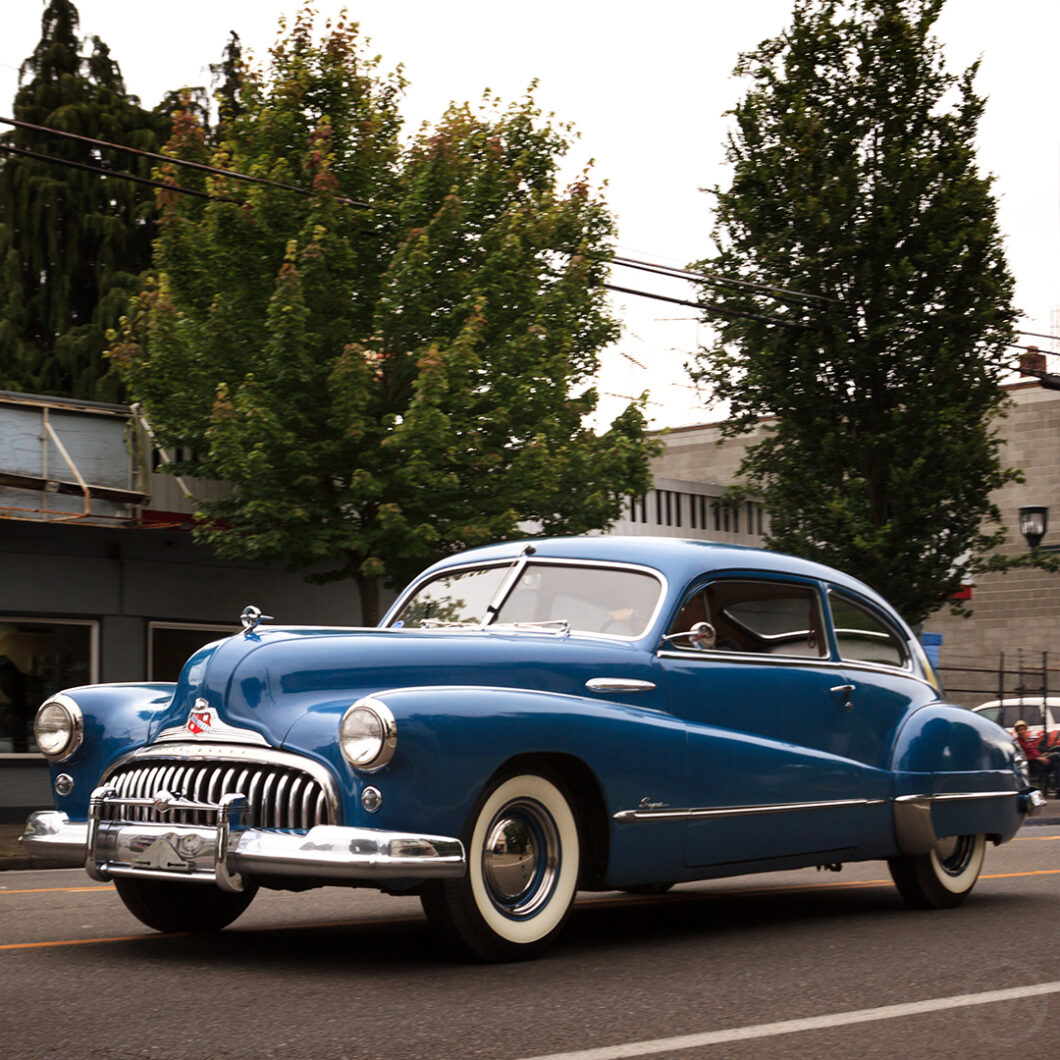It’s impossible to know for sure if it’s true, but it is a good story. In the 1970s, Ex-GM designer Richard Stout once said that the 1948 Buick lineup continued on their pre-war bodies because division boss (and future General Motors president) Harlow “Red” Curtice had a nightmare. Curtice’s supposed bad dream was that the proposed new ‘48 Buick, designed alongside the new finned Cadillacs and Futuramic Olds 98, was publicly lampooned for looking like a Chrysler Airflow.
There may be some truth to that, as a new ‘48 was worked up under Buick’s then-design chief Ned Nickles (a close friend of Stout’s) and later changed for its belated ‘49 intro, but it’s more likely that Curtice didn’t want to wait the extra few months until the ‘48 Cadillacs (which had to come first in GM hierarchy) debuted.
Curtice also recognized that even after six years on the roads, the public still really liked the design. It had been among 1942’s prettiest new machines and the sweeping fenders telegraphed the even more envelope-like lines of the revamped postwar GM cars that were in the pipeline.

From the Y-Job to Your Driveway
Those lines were partly the work of Harley Earl, who, by the mid-1930s, spent nearly all of his time running GM’s famous Art & Color (A&C) section, the first modern corporate design department. While Earl was a great designer, but he was also the boss, and by his 10th anniversary with GM few of his days were spent sketching. Art & Colour had a multitude of employees and had developed into separate studios and a hierarchy within the design center. In the late 1930s, the head of Buick styling was George Lawson.
Later, GM style boss Bill Mitchell (then assigned to Cadillac in the 1930s) would remark on Lawson’s incredible talent and liken him to another contemporary A&C staffer, Virgil Exner. Born in 1907, Lawson trained in design at the Cleveland Institute of Art, just like Ford’s Joe Oros and his wife, Betty Thatcher Oros, both designers of considerable note. Lawson was older than they were and also much more radical in his design thinking.
While he led the efforts on the 1938 and 1939 Buicks, many of his designs were just way too futuristic, both from a production standpoint and a philosophical one. Curtice felt (correctly) that Buicks were middle-class cars for Bankers and Doctors. They probably shouldn’t look like refugees from Fritz Lang’s Metropolis.
Eventually, Lawson was bussed down to do doing advance design work and left GM, following Exner (who had worked on Pontiacs) to Raymond Loewy & Associates. We’ll get back to Lawson in a moment, but according to most accounts, Earl helped pinch hit when it came to the 1941 and 1942 Buicks.
Streamlined Sedanets
The swoopy ‘42s built on the themes of the famous 1938 Y-Job concept car. Most had smoothly integrated but vestigially separate fenders and a trace of the departed running board, but not the Super and Roadmaster Sedanets and convertibles.
“Sedanet” was GM’s term for a fastback sedan, all the rage in the early 1940s and sublimely streamlined. The perfect compliment for this was what Earl termed “airfoil” fenders. These fenders stretched, gently sloping downward, all the way to the rear fenders, greatly exaggerating the “visual length” of the car and previewing the envelope body designs of later years. The 1942 Packard Clipper had a similar but different idea, with front fenders blending into the doors instead of stretching all the way back.

In 1942, this was cutting-edge style and a radical look that recalled not only the Y-Job but also various European designs from Figoni et Falaschi, Saoutchik, and others, which Earl and the GM design teams were no doubt aware of. That year, there were five Buick Series: the low-end Buick Special and hot rod Century on the B-body, the mid-range C-body Super and Roadmaster, and the massive C/D-body Limited limo, the last of which had a decidedly more staid look.
After the war, only the Special, Super, and Roadmaster returned, but the Special line was shrunk to just a couple of models. Although most 1946 U.S. cars were changed in only minor ways from 1942, the four-door Super and Roadmaster got the “airfoil” look, a big style upgrade, and quite a few smaller changes (like the bombsight hood ornament) courtesy of Nickles.
In the meantime, Lawson, like Exner, eventually found Raymond Loewy hard to work with, but while Exner stuck it out for many years, Lawson was gone pretty quickly. Just after the war, he hooked up with Preston Tucker. Around the time the ‘46 Buicks were arriving, he was styling the first incarnation of the Tucker Torpedo.
Those initial Tucker ideas were drawn directly from renderings he’d done at GM in 1939, but Lawson soon had a falling out with Tucker, who stiffed him on payment for the design work. Alex Tremulis was then hired to redesign it, and only some of Lawson’s work made it into the final product. Later on, Lawson sued Tucker and appeared at the impresario’s SEC trial. He later went to Ford and then circuitously, back to GM, doing advance design concepts for the General in the 1950s and 1960s.

The 1948 Buick Super
Of course, in the postwar seller’s market, Buick could sell every car it built, but buyers liked the styling and the cars’ relative mechanical sophistication. While bodies were shared, in those days, there was more technological independence between GM divisions than there would be later on, and Buicks used a torque-tube rear end that allowed for a coil-sprung rear, whereas most cars of the 1940s had 19th-century leaf springs.
This rear end made for a very smooth ride, but it also made it impossible for Buick to use Oldsmobile’s Hydramatic, as it transmitted very bad vibrations every time it shifted. Instead, Buick developed its own two-speed automatic based on a torque converter design it had created for the M18 Hellcat tank. This became, for the 1948 Buick lineup, the Dynaflow. It was super smooth and worked with the car’s existing architecture, but it wasn’t great for performance or gas mileage.
All of Buick’s 1946-48 cars used “Fireball” straight eights, 248-cid in the Special and Super (seen here) and 320-cid in the Roadmaster, and while powerful (115 and 165 hp), they were also all about smoothness. Buick would stick with its familiar eights until 1954 while Cadillac and Olds went V8.
Around the time that was happening, Curtice supposedly had his nightmare, which punted the postwar design one more model year into the future. We’re all richer for it.
We spied this beautiful 1948 Buick Super Sedanet in 2016.

